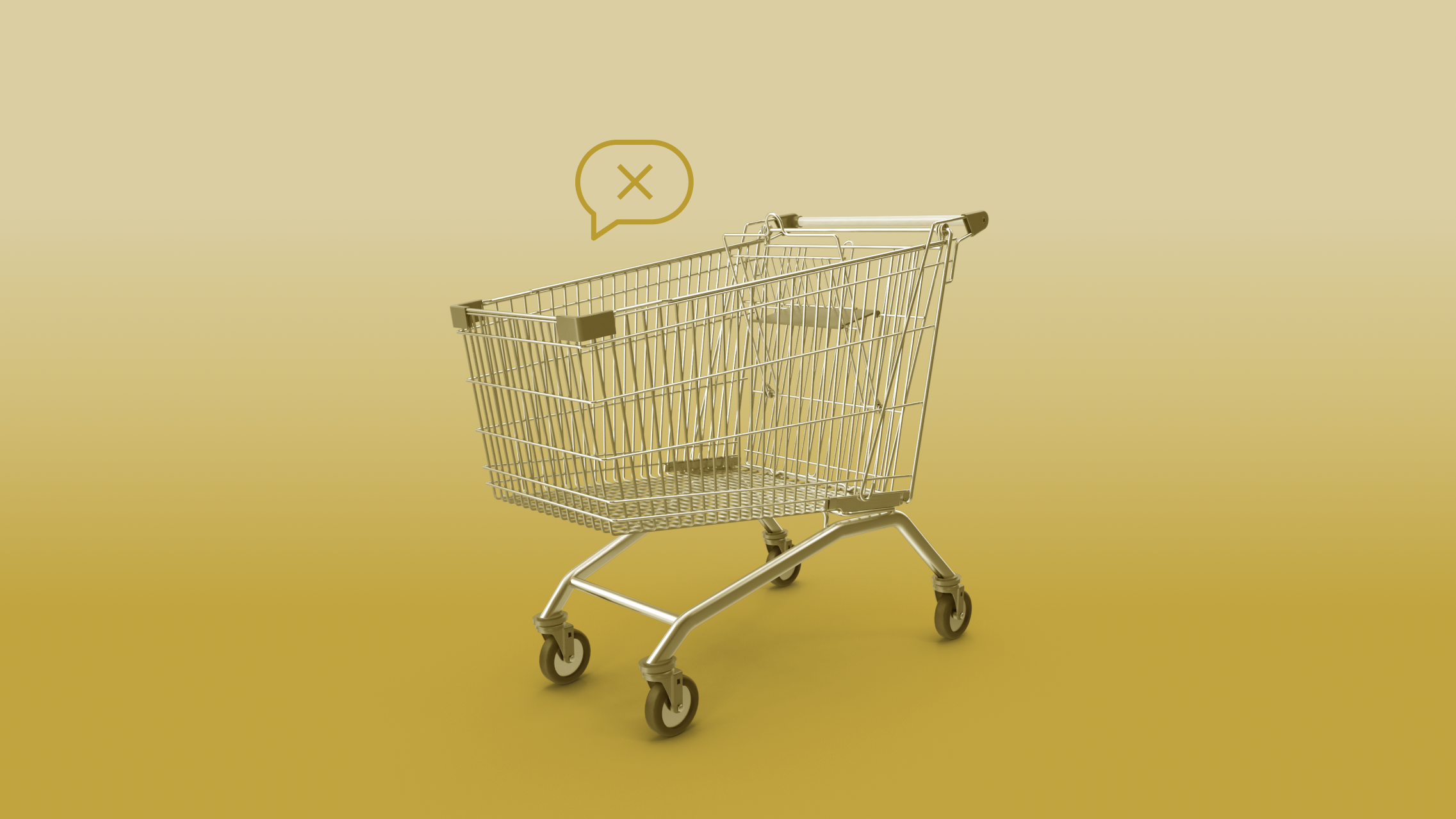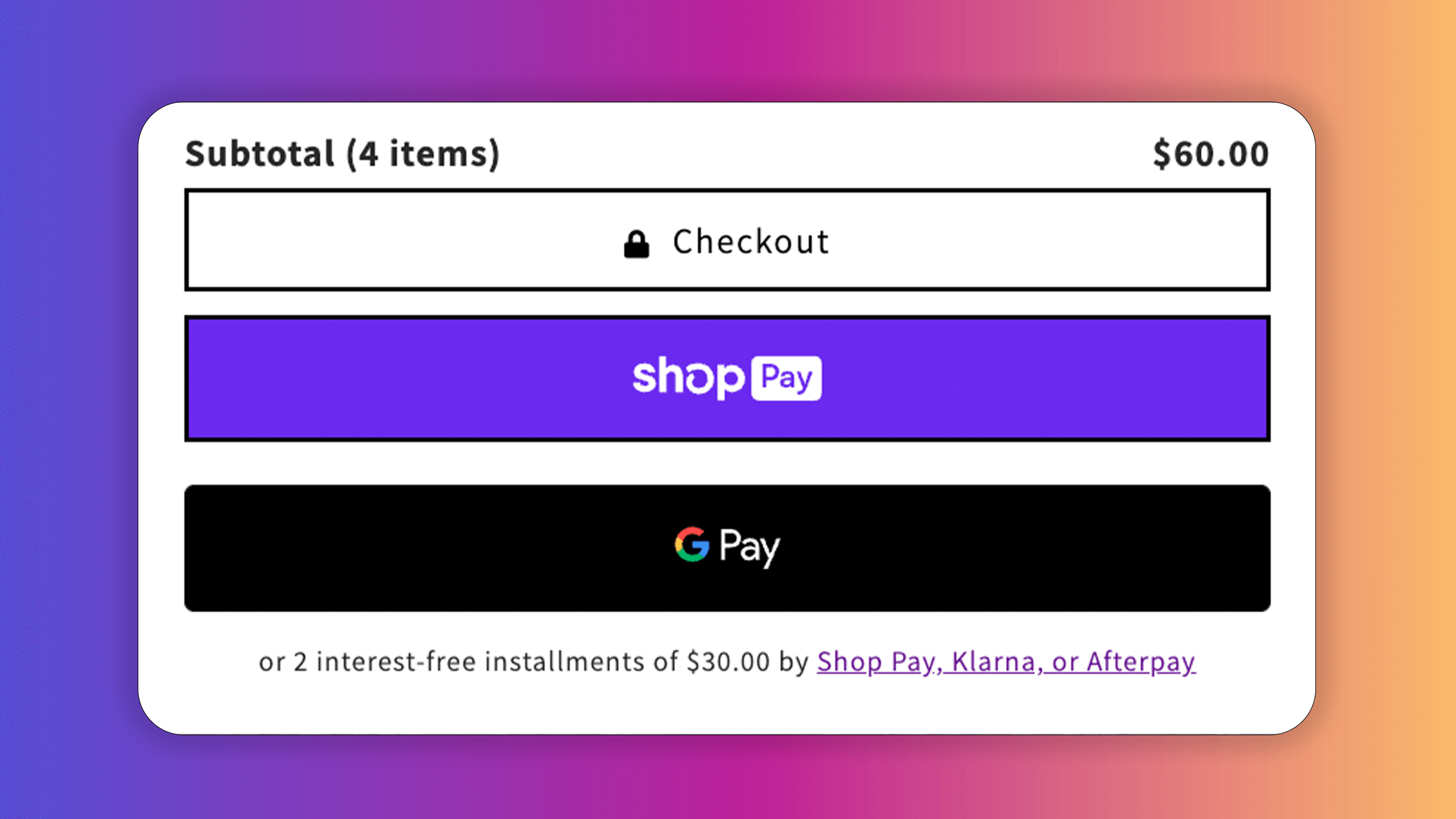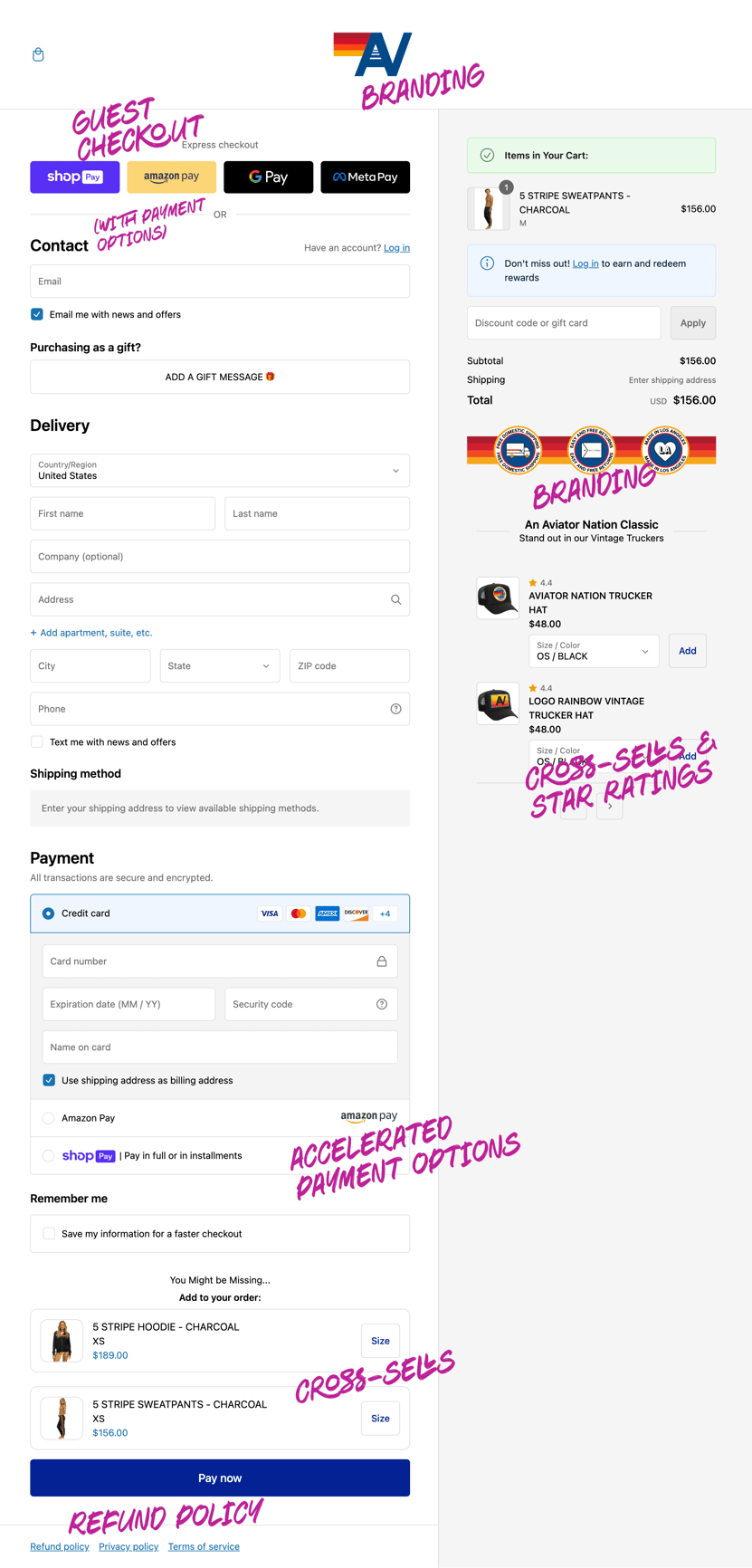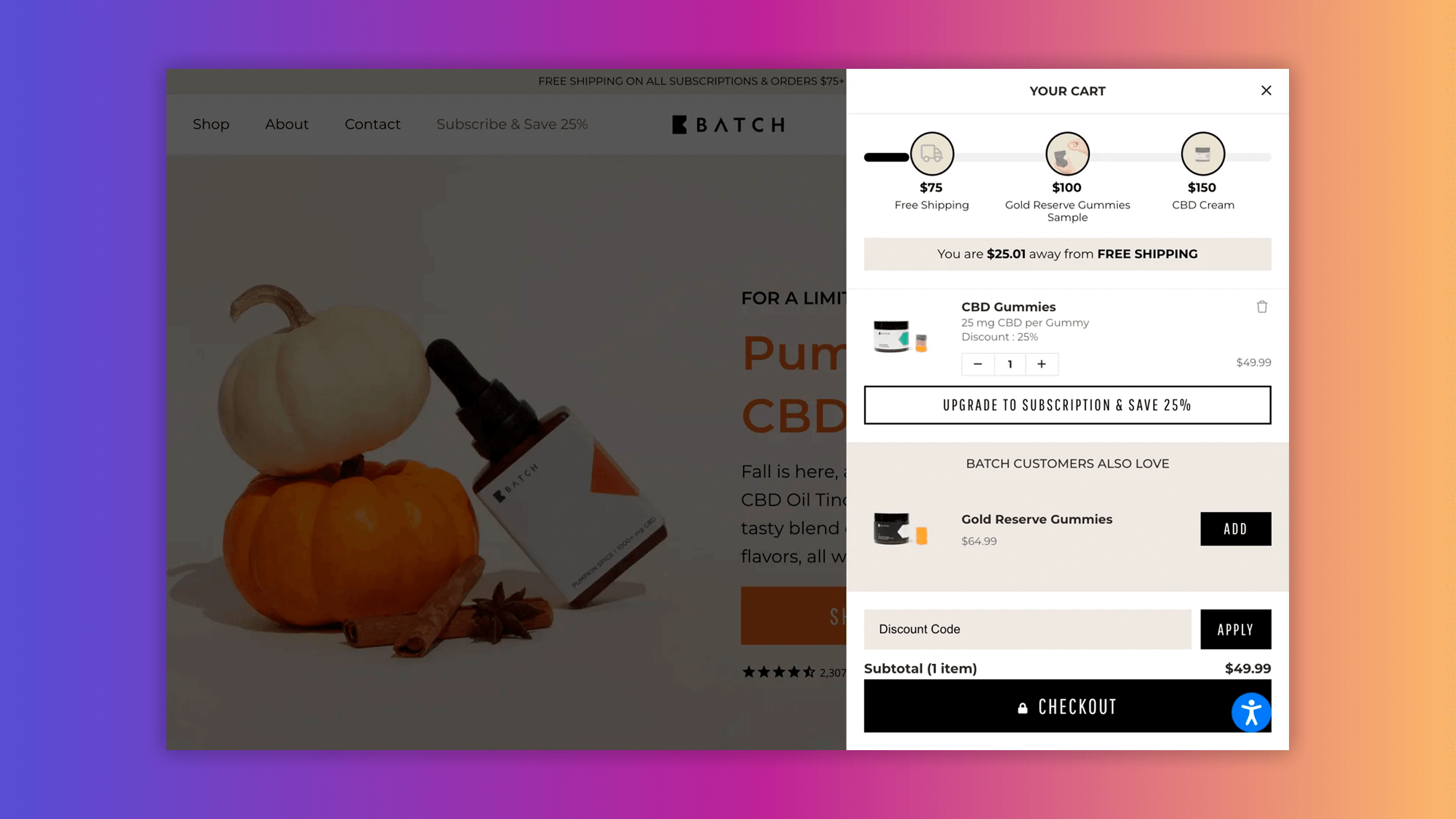Ecommerce Personalization: The Complete Guide for Founders, Merchants, and Marketers
Your ecommerce personalization journey starts here👇

Reduce cart abandonment by streamlining checkouts, offering free shipping, and showing delivery costs upfront to build trust and boost ecommerce sales.
Picture this eerie scene: as customers approach the haunted checkout of a dark and mysterious grocery store, they suddenly run away in fear, leaving behind their abandoned carts. As a customer, this is annoying and disruptive to the flow of shoppers. But what about the grocery store itself, cursed by these disappearing acts?

The store not only loses out on business, but they also have to send someone to put away the items in the now abandoned cart.
That’s exactly what cart abandonment is: a potential customer has added items to their cart, begins the checkout process, and then leaves before actually completing the purchase.
Thankfully, with an ecommerce site, abandoned carts don’t need to be cleared away. But they are definitely still disrupting your business. That’s a lot of dollars just waiting to be spent.
Ecommerce stores should look at reducing cart abandonment as part of their revenue optimization strategy. If you don't, you're missing out on revenue today and all of those potential repeat customers.
By planning ahead and taking steps to mitigate cart abandonment, you can recover those abandoned products and increase sales and conversions for your online business—on Halloween and every day of the year.
Imagine you’re shopping online, and you’ve found the perfect items to add to your cart. But just as you’re about to complete the purchase, something stops you. Maybe it’s unexpected shipping costs, a complicated checkout process, or concerns about payment security. This scenario is all too common and is known as cart abandonment.
Cart abandonment occurs when a customer adds items to their online shopping cart but doesn’t complete the purchase. It’s like filling up your cart at a grocery store and then leaving it in the aisle. For online retailers, understanding why this happens is crucial. By identifying the root causes, such as unexpected shipping costs or a complicated checkout process, retailers can implement strategies to reduce shopping cart abandonment and improve their conversion rates.
Did you know that the average shopping cart abandonment rate is a staggering 70%? That’s right—out of every 100 customers who add items to their cart, 70 of them will abandon it without making a purchase. This statistic highlights the importance of reducing shopping cart abandonment. By addressing the factors that lead to cart abandonment, online retailers can significantly increase their conversion rates and boost their revenue.
The effects of shopping cart abandonment go beyond just lost sales. When customers abandon their carts, retailers miss out on potential revenue and opportunities to build customer loyalty. It’s like having a revolving door of potential customers who never make it to the checkout. This can lead to a negative perception of the brand and make it harder to build trust with customers. Reducing cart abandonment is essential for creating a loyal customer base and ensuring long-term success.
There are a handful of reasons why shoppers stop short of the checkout process. According to stats collected by the Baymard Institute, the average shopping cart abandonment rate is at a startling 70.19% in 2023. Awareness and understanding of these reasons can help you take actions to prevent them.
The same study found the top three reasons for cart abandonment were unexpected expenses, no guest checkout option, and slow delivery times.
Approximately 47% of shoppers abandon their carts due to unexpectedly high shipping costs, taxes, or other fees. These extra expenses are off-putting to shoppers as it feels deceiving. They expect to pay one price and then are disappointed to find all of these surprise extra costs. This might send them looking elsewhere or choosing to find a similar product in-store instead.
Requiring that all shoppers create an account is the second-most cited reason for abandoned carts, with approximately 25% of respondents saying this puts them off making a purchase. Offering a guest checkout option is faster and more efficient for shoppers. Not everyone has the patience or wants to set up a new account each time they buy a product.
Twenty-four percent of online shoppers attribute slow delivery times as the reason they’ve abandoned their carts. Thanks to the likes of Amazon and other online retailers with fast delivery services, shoppers expect to get products quickly. Plus, some shoppers actually need the product within a certain time frame, say for an upcoming birthday or holiday party. If your store can’t deliver on time, they will search elsewhere to find a similar product.
One of the significant reasons for cart abandonment is payment security concerns. Customers are understandably hesitant to enter their payment information on websites that don’t appear secure or trustworthy. To address this, online retailers need to implement robust security measures, such as SSL certificates, and display trust badges prominently on their website. Offering secure payment options, like Shop Pay, can also help alleviate these concerns and reduce cart abandonment. By ensuring customers feel safe during the payment process, retailers can build trust and encourage more completed purchases.
A smooth checkout process helps reduce cart abandonment by making it as easy as possible for customers to place an order. People will abandon their carts if they’re faced with a confusing, long, or complicated checkout process. Create a great user experience to instill confidence and help maintain momentum toward a customer’s decision to purchase. Easy peasy, lemon squeezy!
Your online shop should have as many payment options as possible to capture every shopper, no matter their preference. According to Baymard’s research, 11% of shoppers attribute cart abandonment to limited payment methods. It’s one thing if your potential customer wants to pay you in gold and silver coins. We don’t think that’s happening any time soon. But it’s another issue if you don’t accept, say, the Capital One Quicksilver card.
From credit cards and Apple Pay to PayPal and zero-interest payment plans, people want options to use the payment method that suits them best. By giving them these options, you improve the checkout experience and reduce the likelihood of online shopping cart abandonment.

As we’ve seen, not offering guest checkout options is a major reason for cart abandonment. Adding a guest checkout makes the buying process feel much simpler and quicker for your customers. They don’t have to worry about creating yet another account and another new password to save to their list of endless account information. With a guest checkout, all they have to do is enter their payment and shipping information.
For some, online security is another reason they don’t want to create an account. When a customer is no longer concerned about having their information stored in a company’s system, that’s one less barrier to purchase.
Most ecommerce tech stacks, like Shopify, have a built-in feature to enable a guest checkout option. If not, your web development team should be able to help you design a guest checkout page that is simple and easy to implement into your customer’s shopping experience.
The design and functionality of your online store, on both desktop and mobile, should be flawless. In fact, site or app performance issues like website errors or app crashes are another reason why shoppers abandon their carts. To mitigate this, it’s crucial to squash any bugs and maintain fast load times that would otherwise frustrate your potential customers or lead them to mistrust your store.
Another way to guide your customers through design is to use a progress bar to indicate where they are in the purchasing process. This bar sets expectations and transparency as it conveys how far along they are. With each step they go through, they can easily see how many more steps they have before the final checkout.
Typical progress indicators include “cart,” “review your order,” “payment and shipping info,” and “order confirmation page.” It’s also helpful to include thumbnail product images in their cart on each page rather than just the names of the items. This way, shoppers can easily see and remember what they’re buying, especially if it’s a particularly high number of items.
Your ecommerce platform will have different options for customizing the design of your checkout process, so don't just stick with the default settings. Make it your own, on-brand, and as helpful to the customer as possible.
Including thumbnails of products throughout the checkout process is a simple yet effective way to reduce shopping cart abandonment. By providing a visual reminder of the items in their cart, customers are less likely to forget what they’re purchasing and more likely to complete the transaction. This feature also helps to build trust and confidence in the checkout process, as customers can easily verify that they’re purchasing the correct items.
In addition to reducing cart abandonment, including product thumbnails can also help to increase customer satisfaction and reduce returns. By providing a clear and concise view of the products in their cart, customers are less likely to make mistakes or purchase items that don’t meet their expectations.
To implement this feature, online retailers can use a variety of techniques, such as:
Displaying product images next to each item in the cart
Using hover-over effects to display product details and images
Providing a “view cart” feature that allows customers to see a summary of their cart contents
Using product thumbnails to create a visual representation of the cart contents
By including thumbnails of products throughout the checkout process, online retailers can create a more engaging and user-friendly experience that reduces cart abandonment and increases customer satisfaction.
An in-checkout offer is a tangible incentive that encourages customers to click that purchase button now rather than coming back to it another day or forgetting about it altogether. This can be anything from limited-time deals to upsells through product bundles.
If a customer is on the fence about purchasing your products, a discount code could help them over the fence and into your sales yard. Discounts or special promos create a sense of urgency and prevent a customer from looking elsewhere. These could include an incentive like a free gift when purchasing above a certain spending threshold or when buying from your store for the first time. It makes them feel special and excited about purchasing from your brand.
Another psychological tip to really drive home the impact of the discount is to show customers their total savings. It helps them see they’re getting a better deal and feel more confident about buying your product. For example, not only could you offer a free gift, but you could also display the value of that gift to show how much they would save with this special offer. Rather than just having it say “FREE” next to the item, you can show the original price crossed out, as in this example:
Personalized product recommendations can be beneficial to show the customer you already have a sense of their interests and tastes. In fact, you might even display a product that they had been searching for but couldn’t find or something they didn’t even realize they needed that goes perfectly with the dining table plateware they are about to buy.
Part of your product recommendations can be to offer a bundle, adding extra products that complement the items currently in their basket. Not only does this upsell them with more products, but it also gives them a small discount and makes them feel even better about their buying decision. For example, with Rebuy’s dynamic bundles, you can display an offer that saves them 10% when they purchase a product with other items.
🔍 Have a look at Aviator Nation's checkout page featuring a number of tips from this article 👇

If you don’t offer free shipping, it gives customers an easy excuse for putting off that purchase. When customers can’t see or calculate total costs upfront, they end up abandoning their carts. In fact, the majority of consumers wouldn’t even consider buying from a store that doesn’t have free shipping. Providing free shipping reduces friction for the buyer as they’re not faced with an “extra” cost right before they hit the confirm button.
There are various types of free shipping strategies you can implement based on what works best for your business. For example, you can add the free shipping cost to the product cost. Alternatively, you can use shopper behavior and demographics to set rules and parameters on free shipping.
These include free shipping for:
If your customers need to meet a minimum spend to qualify for free shipping, use a free shipping progress bar. This feature gamifies the shopping experience and encourages shoppers to add products until they reach the target. Not only does this help you get the sale, but it also increases the average order value (AOV) as customers are willing to spend more to get free shipping.
🔍 BATCH uses Rebuy Smart Cart and enables the Multi-Tier Progress Bar to offer free shipping when the customer spends $75, a product sample at $100, and a free product at $150 👇

Make it clear what your return policies are in the cart and the checkout pages, and make it easy for customers to return, refund, and exchange products. About 16% of shoppers attribute an unsatisfactory return policy as the reason why they abandon their carts.
For example, if they’re worried they might be ordering the wrong size, they also don’t want to worry about losing money or being stuck with a product they can’t use.
Offering free returns is another way to reduce your shopping cart abandonment rate. According to a Happy Returns study, 87% of respondents say that free returns are important when online shopping. If you need to set limits on how many times people can take advantage of this offer, you can always set parameters, like “free returns on your first two purchases.”
Free returns can be executed in a number of ways that are convenient to the shopper and your business, including:
Customers shouldn’t have to search for your return policy before buying. Instead, the return policy should be clearly outlined or linked to on the checkout page. That way, customers don’t have to go searching for it before committing to buying your products. It’s one less step that could take them away from your cart and possibly abandon it altogether.
Exit-intent pop-ups can stop your customers in their tracks as they take an extra second to reconsider their plan to abandon ship. These pop-ups have a 17.12% conversion rate. Leverage them to make special offers, suggest bundles, or remind your customers that they can always use the “save for later” option to take the pressure off buying everything at once.
The key to grabbing attention with pop-ups that actually convince people to take action is to use persuasive calls to action (CTAs). A compelling CTA conveys a clear message, adds a sense of urgency, and maintains your brand voice. For example, say your pop-up is offering a limited-time discount. If your brand has a sassy, conversational tone, you might use “Treat yourself before it’s too late!” as the CTA button rather than just a straightforward and lackluster “Buy Now.”
Make offers that are personalized to the consumer. The pop-up should offer something that is relevant and a great deal for the customer. It should also make them feel special. For example, if the shopper has shown a lot of interest in a specific product category, share a promo exclusive to that category.
Customer reviews and ratings help build social proof and influence customer buying decisions. According to G2 research, 90% of customers are more likely to purchase after reading reviews. Just like getting a recommendation from someone you know, reviews give customers reassurance that they’ve picked a worthy product. You can bolster trust even more by featuring expert opinions and popular media mentions, like from celebrities or influencers who have become loyal fans of your store.
We’re used to seeing star ratings, testimonials, and reviews on product pages, but displaying them in the cart is also a great way to keep your customers from changing their minds at the last minute. This is especially important for high-cost products. Using a tool like Rebuy Smart Cart can help you instantly present product ratings or testimonials that quell any worries a shopper might have about a big purchase.
For example, an expensive sectional sofa might be more enticing if it is paired with a review from a previous customer proclaiming that it was “worth every penny!” You can even take it up a notch and include images of those customers using the product or posting about it on social media.
On your product pages, it’s a good idea to leave both positive and negative reviews. It might seem counterintuitive to leave negative reviews, but it actually adds credibility to the reviewers and your business. When there are only positive reviews, a customer might worry that they are fake or paid. However, on the shopping cart and checkout page, you should only include positive reviews. Criticism might be the last-second sway that sends them looking elsewhere.
Sometimes, life really does get in the way of a purchase, and a gentle personalized nudge or reminder can bring your customers back to their carts. This process is part of the retargeting method or reaching out to previous website visitors. In this case, those visitors added products to their cart.
Whether you use email, text messages, or both, the key is to have an attention-grabbing subject line or opening message that can help get your customers back to their carts and through the checkout process.
Set up an automated email marketing campaign for abandoned carts. According to Klayvio, “Abandoned cart email flows generated average revenue of $3.53 per recipient—the highest across all email marketing campaigns and flows.” Plus, the email open rate for abandoned carts is 51.21%, which is very high.
These emails should be targeted to the customer and feature images and links to the product(s) waiting for them in their cart. Create a sense of urgency to purchase the product, especially when an item in their cart is running low or a special offer is about to expire. As with other pages and features, use a mix of social proof, offer discounts, and include convincing CTAs.
📫 Pro Tip: Use Rebuy's integration with Klaviyo to enhance your email campaigns with personalized Smart Links and Reorder Landing Pages.
If you want to get an even higher open rate (a startling 98%!), set up an SMS campaign to remind shoppers about their abandoned carts. Use language that is conversational and adds a touch of personality. If your brand voice is more casual, use emojis and ask your shoppers to respond with any questions. Remember, don’t spam them with messages. Unlike email, text messaging doesn’t have filters or categories. Too many text messages might scare them away or push them to opt out of those notifications.
📲 Pro Tip: Use Rebuy's integration with Attentive to capture mobile numbers via Rebuy Smart Cart.
Your ecommerce personalization journey starts here👇
Implementing all of these tips can help you reduce cart abandonment, but what happens when you add new products? Receive new reviews? Or when you start a subscription program? That’s a lot of changes to keep updating on the backend. You need a tool that can take that burden off your shoulders.
Enter Rebuy’s Smart Cart. Smart Cart is an intelligent shopping cart that uses your store’s data and AI to build trust and drive conversions. You take care of your ecommerce products and services; we’ll make sure your customers see everything you have to offer. Together, we can take steps to improve the customer experience and boost your ecommerce business.
•••
Interested in partnering with Rebuy? Let's do it.
To keep up with the latest trends, platform updates, and more, follow us on LinkedIn.
Recover lost sales and enhance conversions with our 6 proven tips for an effective cart abandonment recovery strategy. Perfect for Shopify stores.
Web 1.0 shopping carts are too outdated for today's shopper. Learn why it's so important to update to a modern cart like the Rebuy Smart Cart™.
New Rebuy customer? Fast-track your way to more sales and amazing shopping experiences with these 5 essential steps.
Stay up to date with all things Rebuy by signing up for our newsletter.